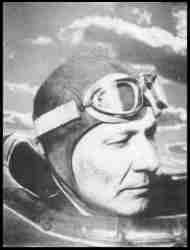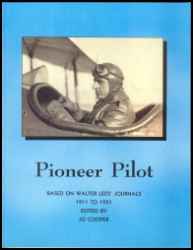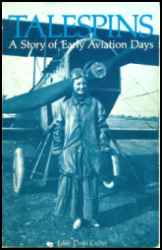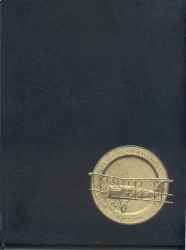

Photo courtesy of Victor Vernon III
Collection of Walter Lees
1883-1968 |
 |
 |
||
Photo courtesy of Victor Vernon III |
Collection of Walter Lees |
|
Courtesy of Victor Vernon III, 9-8-02 Victor Vernon's grandson When Victor was five years old Reverend and Mrs. Vernon returned to the United States with their five surviving children and took up residence in Syracuse, New York where he had accepted the pastorate of the Methodist Church. Two years later he became Dean of the College of Fine Arts of Syracuse University in which capacity he served until his death from typhoid fever on August 14, 1896. Young Victor, handicapped on entering school by his inability to speak English and taunted by his classmates who called him a "Dago", lived as normal a boyhood as the precepts of the Methodist Church then allowed. As he grew older, he enjoyed the long hard winters of upstate New York with its skating, coasting and snowball fithts and the brief but delightful summers devoted to baseball, tennis and swimming. In his early teens he learned to sail and at one time had his own sailboat. Then when he was thirteen his father died and his mother found it necessary to give up their comfortable home hear the University and move the family into an apartment. Victor completed only one year of High School when he first secured full time work as a bank runner and then as a mechanic's helper at a large local chemical plant. In July, 1902, he enlisted in the U.S. Army. Following training and one year's service in the United States, he was sent to the Phillipines where he served until his discharge in September, 1905. A series of sales positions followed until on May 18, 1911, he was married to Charlotte Elizabeth, the granddaughter of Cassius Marcellus Clay, of Cincinnati, Ohio. Following marriage, Vernon became a dealer for the American Underslung automobile for central New York State. A son, Victor Jr., was born in 1912 and a daughter, Charlotte Elizabeth (Betty) in 1913. While on vacation during the summer of 1913 in Marblehead, Mass. one day the young Vernons were sailing and a Curtiss flying boat flew over them, He was intrigued. That Fall he went to Hammondsport, N.Y. where he arranged with Glenn H. Curtiss to purchase a new mahogany hulled Curtiss flying boat and to take flying lessons. He had been given glowing reports of the financial opportunities offered by giving exhibition flights, carrying passengers and instructing but little, if anything, had been mentioned of weather problems, the dangers of mechanical failures and high operating and maintenance costs. Late in 1913 the American Automobile Manufacturing Company went into receivership and Vernon had to take a discouraging loss to close out the business. He was now forced to depend upon his new interest in the fledgling aviation industry to support his family. In the Spring of 1914 he went to Hammondsport where he took flying lessons from "Doc" Wildman, recognized as the best flying boat pilot in the country, and took delivery on his new flying boat whiehc Charlotte Vernon christened the "Betty V". Vernon's new career began inauspiciously when on its maiden flight, being piloted by a U.S. Navy flyer, the plane was badly damaged in landing. Glenn Curtiss offered to repair the hull at no cost to Vernon. Pilot Vernon began his exhibition career in the early summer of 1914 at Crystal Beach near Buffalo, N.Y. Then he moved on to Portland and Bar Harbor, Maine and, that Winter, in Miami, Florida. For each move, except for a record-setting flight between Portland and Bar Harbor, it was necessary to dismantle the plane, ship it by railroad and re-assemble it at the new location. To do this work and to maintain the plane, Vernon employed a full time mechanic. That same year World War I had started in Europe. At the request of G. H. Curtiss who had a contract with the Canadian government to operate a flying school to train Canadian flyers. Vernon left in the Spring of 1915 with his "Betty V" for Toronto. With J. D. MacCurdy, Vernoon instructed the first contingent of ten volunteer Canadian flyers to serve in England. That Fall, as Winter approached and flying became impractical, he stored his plane and transferred to Curtiss' Atlantic Coast Aeronautical Station in Newport News, Virginia as an instructor and test pilot. A daughter, Valerie, was born in December. In the Fall of 1916, Vernon was approached by the Signal Corps which at that time served as the aviation branch of the U.S. Army and was offered the position of Chief Civilian Instructor in its new aviation training program which he accepted and in December moved to Ashburn Field new Chicago. There followed assignments to Memphis, Tenn., Rantoul, Ill., Wilbur Wright Field, Ohio and Lake Charles, La. In May, 1917, he returned to Rantoul, Ill. where he resigned when required to accept a 2nd. Lieut. commission which offered an income on which he could not support his family, now increased by the birth of a daughter, Virginia, in January of 1916. Vernon was soon offered a commission in the U.S.N.A.F. as a Lieut., Senior Grade, which he accepted and he was assigned to the Anacostia Naval Air Station as a test pilot. Late that summer he was transferred to the Naval Aircraft Factory, Navy Yard, Philadelphia. Whiele her he testes planes, motors, props, instruments, ammunition, guns and bombs. Though expereienceing many near misses and minor accidents, he was never injured. He continued to serve here until, following the Armistice, he was honorable discharged in April, 1919. That Fall, sponsored by a group of bankers and business men, he secured the franchise for the products of the G.H. Curtiss Company in Washington, Oregon and Idaho and formed a new company to be headquartered in Portland, Oregon. He took the "Betty V" out of storage and left immediately with his family for Portland. For two years the young company truggled for survival during a period which showed little interest in the potential for commercial aviation. The final blow was the depression which started early in 1921 which forced the venture into receivership. Vernon, then 38, purchased a used Haines touring car in which he loaded his wife, four children, a pet bull dog and camping equipment and made the transcontinental trip over the most primative roads to Syracuse, New York. In Syracuse, he went into the investment business as a representative of a New York banking firm and did very well until just before the stock market crash in October, 1929. He joined the Curtiss Airports Company and moved his family to Larchmont, New York. In June of the following year he joined the newly formed American Airways, Inc. as a Vice President and General manager of its Colonial Airways Division which was headquartered at the Newark, New Jersey Airport. One evening in the Fall of 1932 while driving to his home which was then in Madison, New Jersey he suffered a very serious automobile accident from which it took him three years to completely recover. In June, 1935 he rejoined American Airlines in Chicago, Illinois as Personnel Director under its president, C. R. Smith. During his service, the company grew from a total of 1400 employees to 14,000 at the time of his retirement in 1948. He and his devoted wife enjoyed almost twenty years together before he died on March 17, 1967 in Huntsville, Alabama. |
|
BY VICTOR VERNON These memoirs were written by Victor in April, 1959, when he was some 76 years of age. I am sure that you will find his 27 page story to be fascinating, his style to be highly readable, as I did. It is through the courtesy of his grandson, Victor Vernon III, that this story has been made available to the online community. I am very grateful to him, and to his grandfather, for preserving this invaluable record. |
|
Pages 1 & 2. Childhood Pages 3 & 4. School Days Pages 5 & 6. Army Service Pages 7 & 8. Curtiss Flying Boat Pages 9 & 10. Christening the Betty V Pages 11 & 12 Maine Adventures Pages 13 & 14 Joins Curtiss |
Pages 15 & 16. Atlantic Station Pages 17 & 18. Newport News Pages 19 & 20 Army Instructor Pages 21 & 22 Navy Aircraft Factory Pages 23 & 24. Oregon & Washington Pages 25 & 26 Family Problems Page 27 Conclusion |
|
SELECTED ANECDOTES Victor Vernon has flown since 1913, when he owned and operated a hydroplane, making passenger flights from New York to Florida. 1915 Victor was called by the Curtiss people as test pilot, February 1, 1920 1916 Victor Vernon and his wife Charlotte, became lifelong friends of Edith Dodd Culver, the wife of Paul Culver and the author of TAILSPINS, A Story of Early Aviation Days. 1916 Victor was inducted into government service as civilian instructor to the first fledglings of America's air fleets. Later, he trained many of the first Canadian fliers who went overseas to contest cloud supremacy with the Hun.
February 1, 1920 Captain Thomas Baldwin, who was manager of the Curtiss Flying School where Paul learned to fly and where I arrived as a bride in 1916, discouraged my visits to the field at first. He worried that I would be nervous when Paul was in the air due to the frequent crashes. But I soon persuaded him that my nerves were steady, and to prove it, he arranged a flight with Victor Vernon's flying boat to test my mettle. I passed with "flying colors" and was then allowed to visit the school whenever I chose. 1917 The Dayton Sunday News of July 29, 1917 carried a feature story on some of the aviators, using their pictures and a biographical sketch of each one under the heading "Face to Face With Real Men." Paul Culver was one of them. There were Major Arthur Christie, Commandant of the Wilbur Wright Field, Captain Maxwell Kirby, Captain J.B. McCauley, Captain C.S.Jackson, and Victor Vernon, Chief Civilian Instructor, to mention a few. Wilbur Wright Field began to grow as the war continued. We watched it as block after block of hangars, houses, barracks, and so on were completed and hundreds of men arrived daily to take up duty there. The air seemed literally full of airplanes, a strange new experience for us. Up to a short time ago, the sight of more than one or two airplanes aloft at once was a rare occurance. Flying schools and training centers were springing up all over the nation and this one near Dayton, the first complete aviation training center to go into operation, was teeming with activity. As the need arose, civilian pilots were hired. Among them were Victor Vernon, Walter Lees, Ernest Hall, Ivan P. Wheaton, , Earl Southee and many others. 1918 In 1918, he entered the American naval air service as a test pilot, and flew the big "Hydros," the N-C covey, that sped the first trail across the winds of the Atlantic. Before he returned to the Curtiss company, he was in conference at Washington relative to the first aerial mail service routes blazed by the government. Paul Culver was on duty at Bolling Field, near Washington, D.C., when news of the Armistice flashed across the world on November 11, 1918. He and several other flyers were ordered to stand by as plans were hastily made for several airplanes to take part in the celebration which had already begun..By early afternoon, they had made up a flight plan in which a formation of a half dozen Army planes was ordered to fly over the city, looping the loop in unison, and to frolic in the sky to express their joy that the war was over. When the aerial celebration was over, Paul and my sister Helen Dodd joined us at the New Willard Hotel (the scene of our wedding two years before) and together we joined the crowds of merry-makers until the wee hours. It seemed providential that on that thrilling night we should by chance meet two of our closest friends of the early days of aviation: Captain Thomas Baldwin, the famous pioneer aeronaut who was in charge of the Curtiss Flying School where Paul had trained, and Victor Vernon, who had been his instructor. 1920 Victor was chief pilot with the Oregon-Washington-Idaho Airplane Company in Portland, Oregon. One day it was Walter's turn to fly the M-F boat with passengers to Seaside. The passengers were two doctors. Walter knew the M-F boats were sluggish on aileron controls. He'd had trouble flying under the same conditions before, so he told Vernon he didn't think they should fly. Vernon disagreed and got a younger pilot to take the trip. The wind was fairly strong, from the northeast of the city, so they took off up-river and circled over the town. They got off nicely, but then in the turn, the wind caught them and they crashed in the river. No one was seriously hurt, but the plane was a wreck. |
|
|
|
|
|
|
 |
by Jo Cooper |
 |
 |
A Story of Early Aviation Days by Edith Dodd Culver |
by Edith Dodd Culver |
|
If you have any more information on this Early Flier, please contact me. E-mail to Ralph Cooper |


|